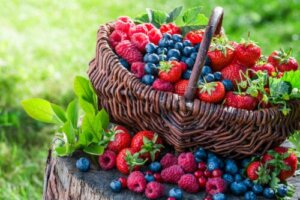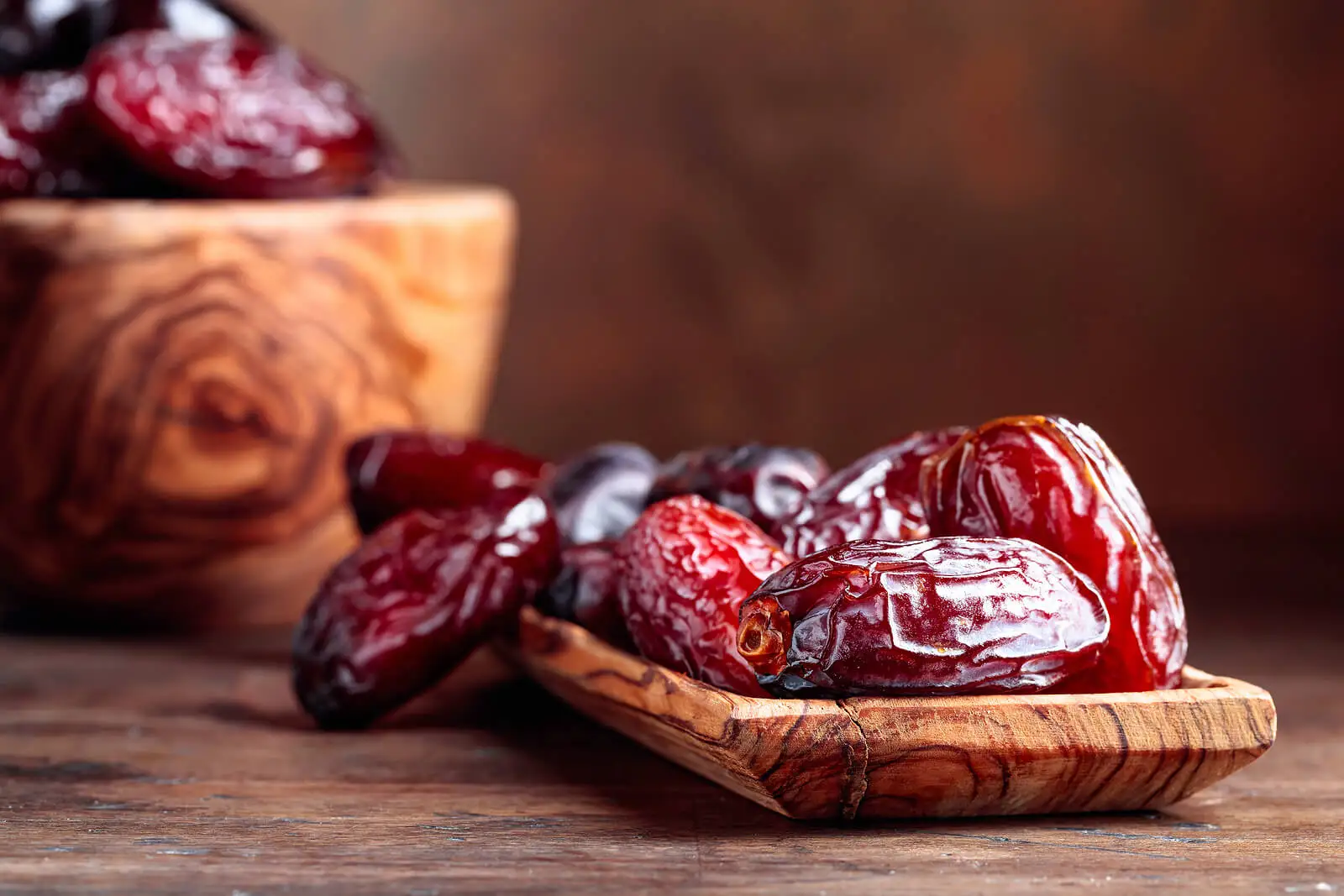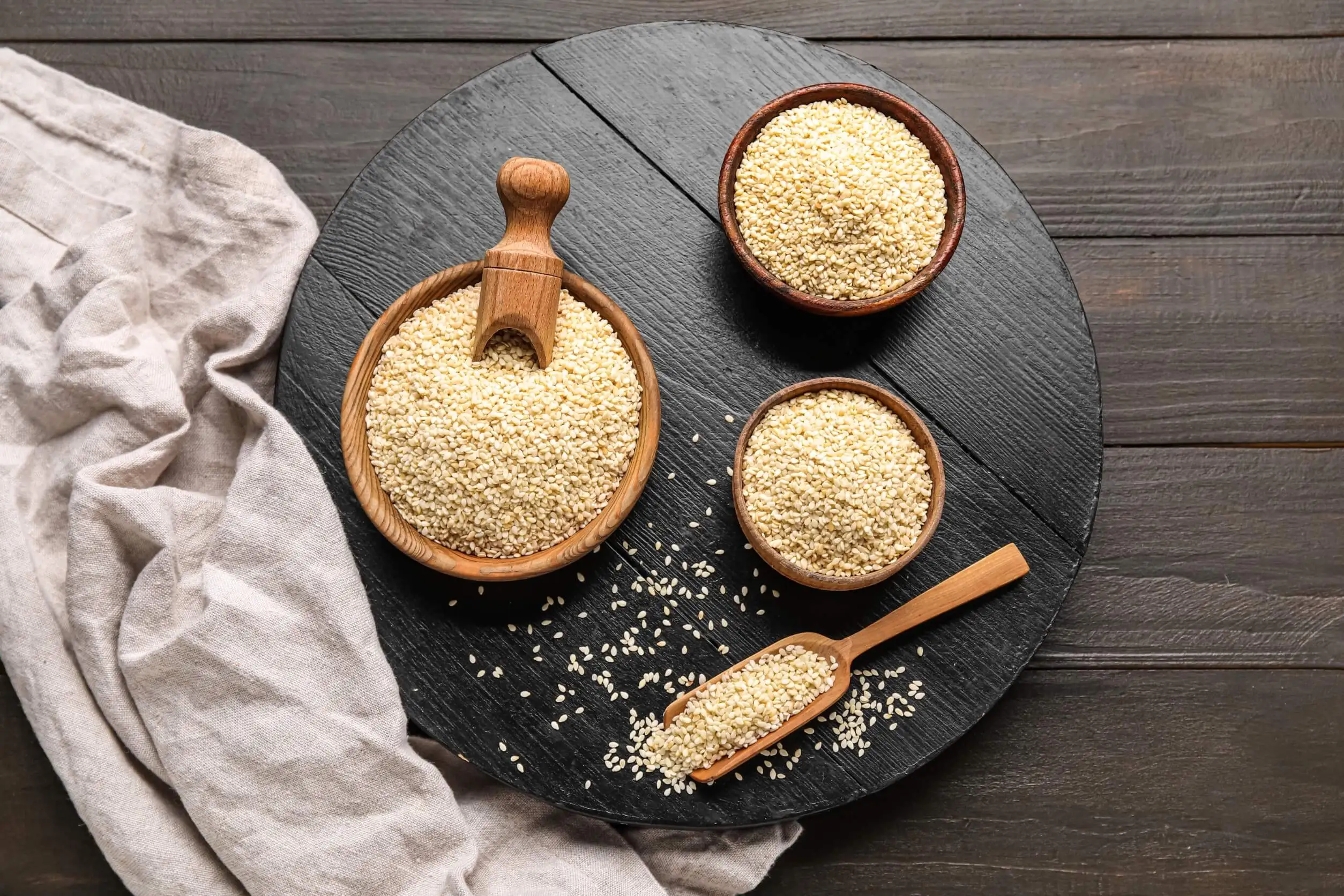7 Foods That Improve Your Estrogen Levels


Reviewed and approved by the nutritionist Maria Patricia Pinero Corredor
Hormonal imbalances can be common during the different stages of life. With good nutrition, it’s possible to provide foods that improve estrogen levels and try to regulate possible imbalances.
In some situations, it’s necessary to increase the presence of these foods. But before making changes in the diet, it’s crucial to consult a specialist to rule out health problems and not to consume too much of anything that doesn’t benefit you.
What is estrogen and what is its function?
Estrogen is the name used to refer to a group of hormones with an important function in the sexual and reproductive development of women. As indicated by the experts at Johns Hopkins Medicine, they’re synthesized in the ovaries, adrenal glands, and fat cells.
The best-known functions of this hormone are the regulation of the menstrual cycle, the development of female sexual organs, and the appearance of pubic and axillary hair. However, these hormones are transported through the blood and carry messages to other organs and tissues, such as the skin, heart, liver, and brain.
Therefore, their repercussions go beyond sexual health. According to data provided by the health portal Barna Clinichealth portal, these are some of its other outstanding functions:
- Regulation of blood cholesterol levels
- Promotion of bone health
- Collaboration in the formation of collagen
- Stimulation of libido
From here lies the importance of maintaining adequate levels of this hormone, since the lack or excess is related to many chronic and acute diseases.
This can be read in an article published in the journal Biomedical and Phamarcotherapy, where they point out that:
- The drop in estrogen levels that comes with age, can have repercussions in loss of bone mass, muscle degeneration, or imbalances in blood glucose and lipids.
- An excess of estrogen is linked to problems such as polycystic ovary syndrome, infertility, and breast and ovarian cancer.
7 foods that improve estrogen levels
Diet and lifestyle are two factors that can affect the levels of estrogen manufactured by the body.
As noted in this publication in the journal Nutrients, phytoestrogen is a compound present in vegetables that have an estrogenic action. Therefore, depending on the foods eaten, levels may be higher or lower.
However, it should be noted that there are many factors that determine the action of phytoestrogen:
- The hormonal situation of the person: age, sex, and physiology.
- The state of their health.
- The availability, type, and amount of phytoestrogen consumed.
Therefore, with the knowledge so far, this list of foods serves as a guideline. In case of any doubt or suspicion of having a hormonal problem, it’s essential to consult with the medical team.
Note: the foods that we’re going to discuss should always be included in the framework of a balanced diet.
We think you may be interested in reading this, too: Estrogen: An Essential Hormone for Women
1. Dried fruits

Dried fruits, such as dates, plums, or apricots, can help improve estrogen levels. These are healthy snacks that can also be easily transported when you’re out and about or traveling.
These are foods that concentrate all the nutrients present in fresh fruit, but in greater quantity: carbohydrates, fiber, and vitamins. This is due to the loss of water during the production process.
Also, as can be seen from the analyses published in Foods, they stand out for the presence of various phenolic compounds, some of which may have estrogenic activity, according to a study in the journal Frontiers in Pharmacology.
2. Flaxseed
Small flaxseeds are another food with a high amount of substances with estrogenic effects on the body.
In this case, as can be read in Trends in Food Science and Technology, these are lignans, which are also present in other seeds, vegetables, or fruits.
Flaxseed is quite easy to incorporate into everyday life. Just add a small spoonful to a yogurt, fruit smoothie, vegetable cream, or porridge.
3. Beans
Within the large group of phytoestrogen, we can highlight 3 of them: coumestanes, lignans, and isoflavones. As stated by Dr. Schwarz for McGill University, the former are found in fairly high amounts in beans.
There are also other legumes that can be counted among the foods that improve estrogen levels: red and white beans, chickpeas, or mung beans. They contain not only coumestans, but also isoflavones. Apart from this, all of them are a good source of protein. Thus, introducing legumes into your diet and replacing meat can bring extra benefits in this regard.
It’s useful to mention that following a diet such as the so-called “Western” has been linked to poorer hormonal health. This is pointed out by different sources, including the journal Biochimica and Biophysica Acta. Therefore, conforming to a diet that includes beans is not a bad idea.
4. Alfalfa sprouts
Alfalfa sprouts are a food that has been highly promoted, for some time, for its possible positive effects on health.
Among its varied and outstanding nutritional contribution, experts from Memorial Sloan Ketterign Cancer Center state that they contain phytoestrogen, which may have some hormonal action. Despite this property, it’s advisable to take them with care, well cleaned, and kept cold, as they have been linked to poisoning by E. coli and salmonella.
5. Sesame seeds

Similar to flaxseed, studies cite sesame seeds as one of the foods that contain lignans. Once in the body, the intestinal microbiota can transform them into compounds with estrogenic activity.
This is detailed by the authors of a trial published in The Journal of Nutrition. In their trials, they tested the effects of consuming 50 grams of this food for 5 weeks in a group of postmenopausal women. After these analyses, the authors concluded that the intake of sesame seeds can have antioxidant action, improve blood lipids and the state of sexual hormones.
6. Soy
Although we present it almost in last place, soy is one of the foods that contain more phytoestrogen. As indicated by the Harvard School of Health, isoflavones predominate among them. The amounts may vary according to the type of soybean derivative consumed: tofu, tempeh, beverage, or whole grains.
There are also products made from concentrated soy isoflavones. According to data published in the journal Hospital Nutrition, these have been shown to have various effects during peri- and postmenopause:
- Improve overall health and quality of life.
- Strengthen bone density.
- Reduce cardiovascular risk through an improvement in the lipid profile.
However, due to their high concentration, it isn’t advisable to introduce them without consulting a specialist. On the other hand, soy and its derivatives share many of the benefits of legumes, so they can be eaten in moderation as part of a healthy diet.
7. Red fruits and berries
As we have mentioned, lignans are a type of phytoestrogen that’s abundant in flax or sesame. However, it’s not only present in seeds, but berries also contain an interesting amount of this nutrient. This is indicated by the authors of an analysis carried out by the Nordic Council of Ministers.
Therefore, adding a cup of these fresh fruits among the recommended 3 daily servings can have positive effects on estrogen levels.
Like this article? You may also like to read: Taking Care of Your Microbiota Helps to Improve Menopausal Symptoms
Try these foods that improve estrogen levels
They are all sources of different types of phytoestrogen that help regulate the function of this hormone in the body. These are healthy and nutritious foods that can be safely introduced into the healthy population. However, the most important thing is to do this within the framework of a healthy and balanced diet and not to consume too much of anything.
You also shouldn’t forget that both the deficit and excess estrogen can be harmful to health. Likewise, before taking any measures on your own (including dietary), it’s essential to consult your doctor if you suspect you may have any hormonal problems.
All cited sources were thoroughly reviewed by our team to ensure their quality, reliability, currency, and validity. The bibliography of this article was considered reliable and of academic or scientific accuracy.
- Andargie M., Vinas M., Rathgeb A., et al. (2021). Lignans of sesame (Sesamum indicum L.): a comprehensive review. Molecules. 26 (4): 883. Recuperado de: https://www.ncbi.nlm.nih.gov/pmc/articles/PMC7914952/
- Carlsson L., Andersson C. (2017). Phytoestrogens in foods on the Nordic Market. A literature review on occurrence and levels. Nordic Council of Minsters. Recuperado de: https://www.diva-portal.org/smash/get/diva2:1137191/fulltext01.pdf
- Delgado, B. J., & Lopez-Ojeda, W. (2022). Estrogen. In StatPearls [Internet]. StatPearls Publishing. https://www.ncbi.nlm.nih.gov/books/NBK538260/
- Domínguez I., Yago M., Salas A., et al. (2020). Effects of dietary phytoestrogens on hormones throughout a human lifespan: a review. Nutrients. 12 (8): 2456. Recuperado de: https://www.ncbi.nlm.nih.gov/pmc/articles/PMC7468963/
- Echevarría V., Echevarría F., Barreto G., et al. (2021). Estrogenic plants: to prevent neurodegeneration and memory loss and other symptoms in women after menopause. Frontiers in Pharmacology. 20 (12). Recuperado de: https://www.frontiersin.org/articles/10.3389/fphar.2021.644103/full
- Harvard School of Public Health. (2022). Straight talk about soy. Recuperado el 10 de marzo de 2023 en: https://www.hsph.harvard.edu/nutritionsource/soy/
- Johns Hopkins Medicine. Estrogen’s effects on the female body. Recuperado el 10 de marzo de 2023 en: https://www.hopkinsmedicine.org/health/conditions-and-diseases/estrogens-effects-on-the-female-body
- Kiyama R. (2016). Biological effects induced by estrogenic activity of lignans. Trends in Food Science and Technology. 54: 186-196. Recuperado de: https://www.sciencedirect.com/science/article/abs/pii/S0924224416300036
- Martín C., López A. M. (2017). Benefits of soy in women’s health. Nutrición Hospitalaria. 34 (Suppl. 4): 36-40. Recuperado de: https://pubmed.ncbi.nlm.nih.gov/29156930/
- Patel S., Homaei A., Raju A., et al. (2018). Estrogen: the necessary evil for human health, and ways to name it. Biomedical & Pharmacotherapy. 102: 403-411. Recuperado de: https://pubmed.ncbi.nlm.nih.gov/29573619/
- Rietjens, I. M., Louisse, J., & Beekmann, K. (2017). The potential health effects of dietary phytoestrogens. British journal of pharmacology, 174(11), 1263-1280. https://bpspubs.onlinelibrary.wiley.com/doi/full/10.1111/bph.13622
- Rowe, I. J., & Baber, R. J. (2021). The effects of phytoestrogens on postmenopausal health. Climacteric, 24(1), 57-63. https://www.tandfonline.com/doi/abs/10.1080/13697137.2020.1863356
- Schwarz, J. (2017). A silent spring. Mc Gill University. Recuperado el 13 de marzo de 2023 en: https://www.mcgill.ca/oss/article/health-nutrition-history-quackery/silent-spring
- Shore, L. S., & Shemesh, M. (2016). Estrogen as an environmental pollutant. Bulletin of Environmental Contamination and Toxicology, 97, 447-448. https://link.springer.com/article/10.1007/s00128-016-1873-9
- Srednicka D., Kazimierczak R., Ponder A., et al. (2020). Biologically active compounds in selected organic and conventionally produced dried fruits. Foods. 9 (8): 1005. Recuperado de: https://www.ncbi.nlm.nih.gov/pmc/articles/PMC7466266/
- Varlamov O. (2017). Western-style diet, sex steroids and metabolism. Biochimica et Biophysica Acta. 1863 (5): 1147-1155. Recuperado de: https://www.sciencedirect.com/science/article/pii/S0925443916301430
- Wu W.H., Kang Y.P., Wang N. H., et al. (2006). Sesame ingestion affects sex hormones, antioxidants status, and blood lipids in postmenopausal women. Journal of Nutrition. 136 (5): 1270-5. Recuperado de: https://pubmed.ncbi.nlm.nih.gov/16614415/
This text is provided for informational purposes only and does not replace consultation with a professional. If in doubt, consult your specialist.








